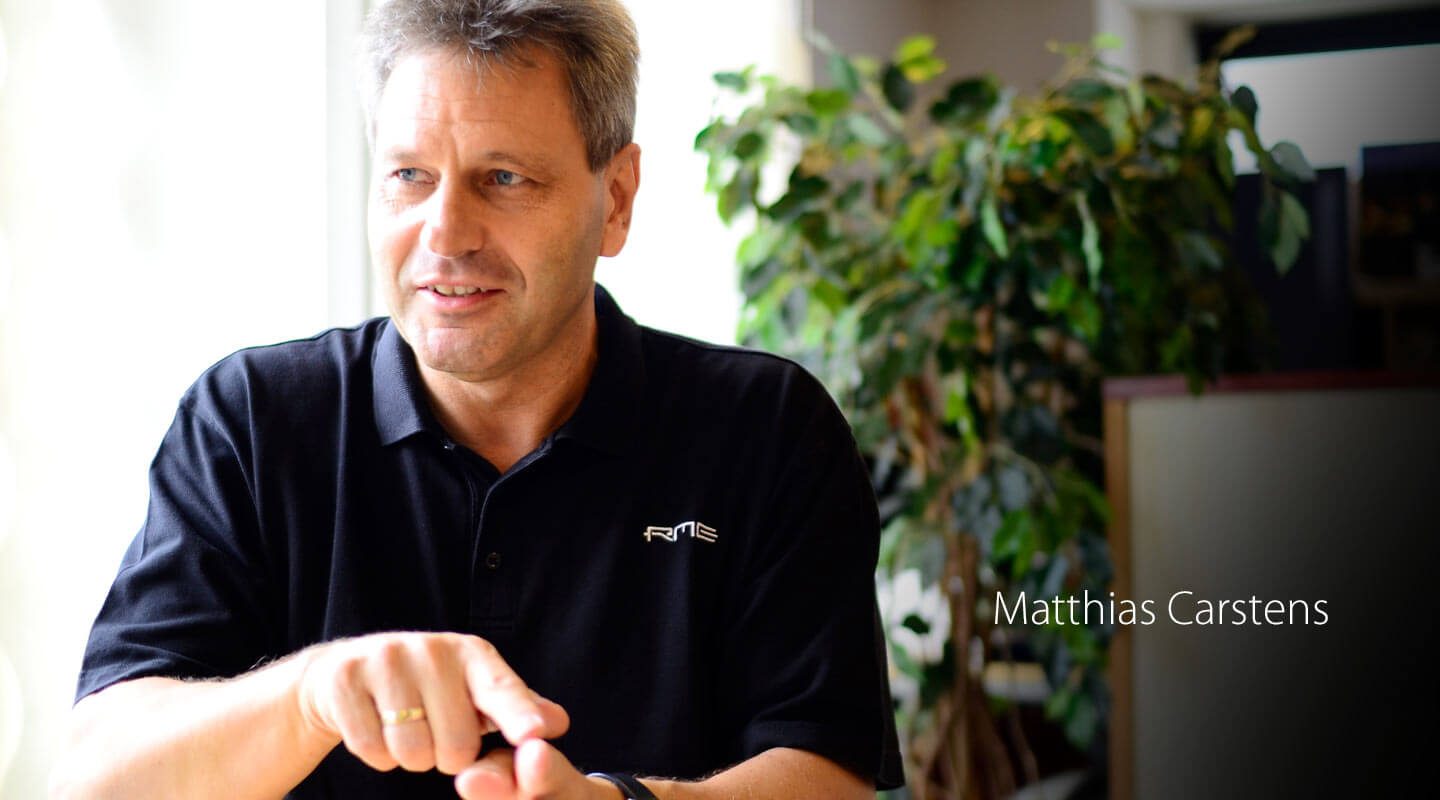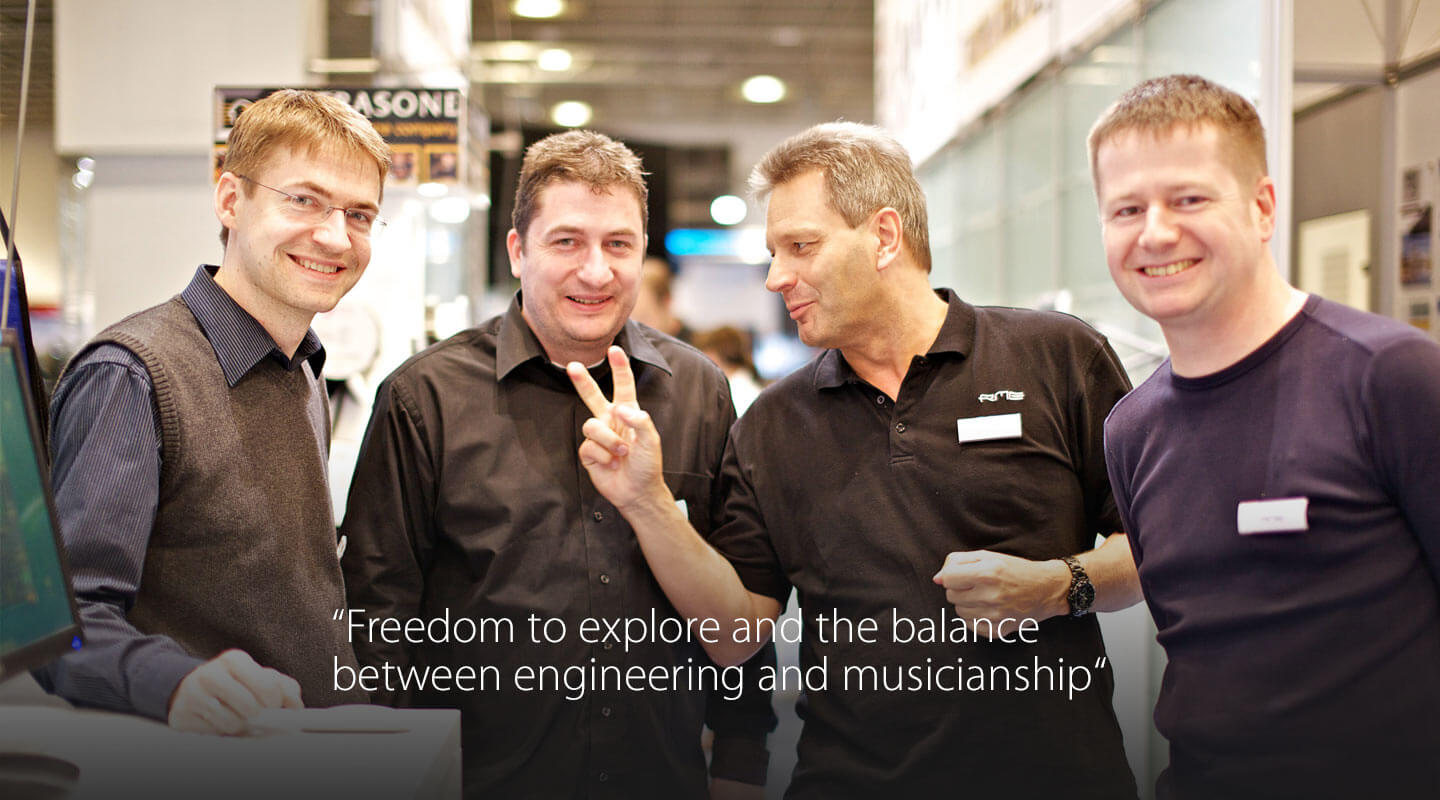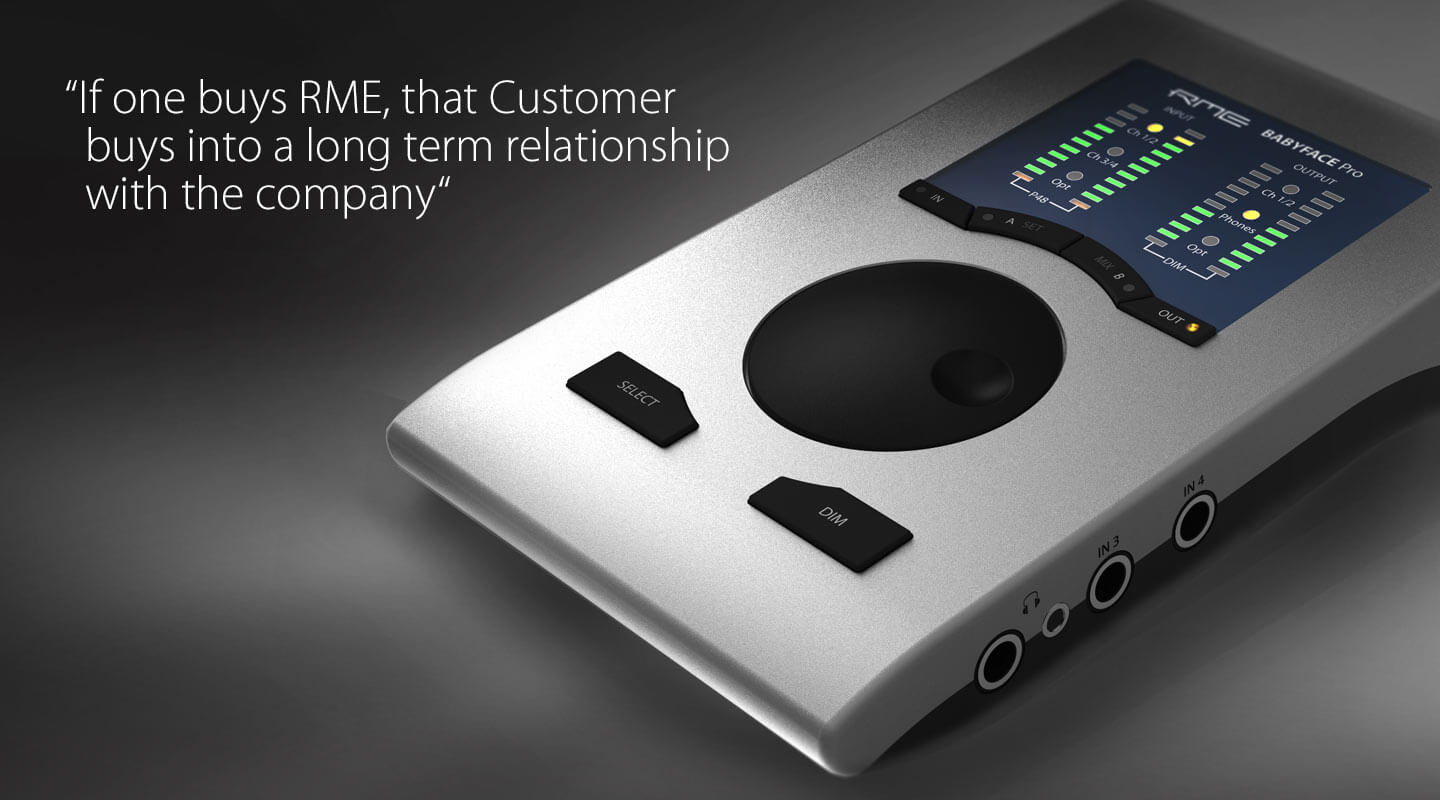Matthias Carstens Shares His Perspective on the RME Approach to Design and Manufacturing

Haimhausen, Germany… Over the course of the past twenty years, RME has firmly established itself as one of the pioneers of soundcard and recording interface design. Founded by Ralf Männel, who serves as the company's primary DSP designer and Matthias Carstens, who guides the company’s development efforts, RME has earned an esteemed reputation for creating innovative, user friendly, and high-quality digital audio solutions that enable songwriters, composers, and other audio professionals to focus on their creative endeavors without being hindered by the technical aspects of their work. Balancing the artistically creative challenges of music and audio production with the technical aspects of capturing those ideas requires an understanding of both sides of the ‘equation.’
Matthias Carstens juggles a wide range of responsibilities with RME. In addition to overseeing product conceptualization, development, specification, description, and manual creation, he is also actively involved in the company’s marketing initiatives. Carstens has direct input to product marketing, website maintenance, the creation of company press releases, as well as support services for RME’s distributors, dealers, and customers. So whether the business of the day calls for the testing of driver and software updates, demonstrating at industry events, or analyzing customer feedback, Carstens has his hand on the pulse of the company.
As one might expect, understanding how a musician approaches one’s craft is crucial to developing intuitive product designs. Carstens trained as an electronic engineer, played drums in bands, and also developed an interest in recording—and it is this combination of skills that led to the formation of RME. “For me, it turned into a ‘business’ when I started work as an external developer for several companies,” Carstens reports, “but the real RME business commenced in 1996 as somewhat of a ‘spin-off’ from publications of the German electronics magazine ELRAD.”
When queried about how his background influenced his decision to form RME, Carstens reflected on his experience with Neutrik. “I had done some beta testing as well as providing some help in refining the Neutrik A1 and A2 audio measurement systems,” he explained. “At that time, digital audio had just started and any product that was able to measure or analyze AES/SPDIF was quite expensive. The RME DAM-1 was ahead of its time and comparatively inexpensive, so it was only logical that this ELRAD DIY unit should be made available to the public. As a journalist, I could handle the product’s marketing and manuals myself and, having worked as a repair technician, I already had some good distributor contacts. Hence, it all came together at the right time.”
Carstens shared some perspective on his design philosophy, “As both a user and a customer, I am acutely aware of and annoyed by devices that miss those features I deem crucial. At RME, we therefore try to produce very flexible designs based on a re-programmable Field Programmable Gate Array (FPGA). This way, a unit can be upgraded later on in the event we initially missed something. But already, the base of our designs is more flexible and powerful than with most competitors. We also opted for better audio quality and, thus, accepted a higher price point while being careful not to become too expensive. The balance between optimal performance and acceptable compromises is very carefully designed into all our units.”
“From the start, he continued, “RME did not use custom chips for many tasks. For example, AES, ADAT and MADI receiver and transmitter circuits are part of the FPGA design. That helps our products not only to be more flexible, it also saves some costs. While our first bus interfaces were based on example code, this code was already highly modified. Later on, we took over the core interface's entire development, so FireWire 400/800, USB 2, and USB 3 are fully self-developed and integrated into the FPGA.”

The RME developers - Martin Björnsen, Uwe Kirst, Matthias Carstens, Ralf Männel
RME’s culture and design philosophy has had a profound impact on the design of all the company’s products, as Carstens explained, “The biggest difference between RME and other audio companies is freedom. Without that, RME wouldn’t exist—or we certainly would not be as successful. From time to time, I often ask myself how we can repeatedly outperform the heavyweights of our industry when they have far greater resources—capital or otherwise. Well, they don’t have RME developers, and they don’t let their developers do what they do best.”
“By contrast,” Carstens continued, “RME developers have the unique freedom to develop what they want. Usually, a company hires developers, they get paid for their work, then move on. At RME, we develop those products we are eager to create, that we have interest in, and that in the end, we are very proud of. This explains the immense ambition behind every RME product as well as the unique long-time support we offer. These products are our ‘babies’ and we take care of them as best we can.”
With such a ‘hands on’ approach to all that has taken place at RME over the past twenty years, one can’t help but wonder which RME product Carstens is most proud of and how the company has evolved to keep pace with technological changes. He identified two products. “I have no favorite product per se,” he explained, “but I use the Babyface Pro daily because of its nice form factor and sound quality. And to this day, I am still impressed by the Micstasy’s architecture and technical design. As for how we’ve evolved, there have been many updates on all levels. The developers now have better tools and continually fine-tune their skills. In terms of manufacturing, we’ve invested heavily in state-of-the-art machinery to ensure production based on the latest micro components and EMI requirements are never compromised.”

Carstens took a moment to reflect on the future, “At RME, we deliver well-thought-out solutions to problems our competition is not necessarily even aware of. We deliver solutions that just simply work. Our driver stability and low latency abilities are already legendary and there is always one unique feature on our gear that you won’t find elsewhere. The audio industry is now well on its way to networked operation. We will have products that take advantage of these capabilities and, like all RME offerings, they will come with the best functionality in the industry.”
Before turning his attention to the business of the day, Carstens offered these parting thoughts, “This year RME celebrates 20 years of successful business - a time frame nobody would have dreamed of when it all started. We have some exciting new additions coming that will be disclosed over the year: new products, new features in TotalMix FX, and more. If one buys RME, that customer buys into a long term relationship with the company. We are proud of our reputation, our legacy, and have every intention of providing both present and future customers with the best products and support available. We want our customers to share in our celebration as we provide them our best for their continued support.”
Find out more about RME's range of professional audio products